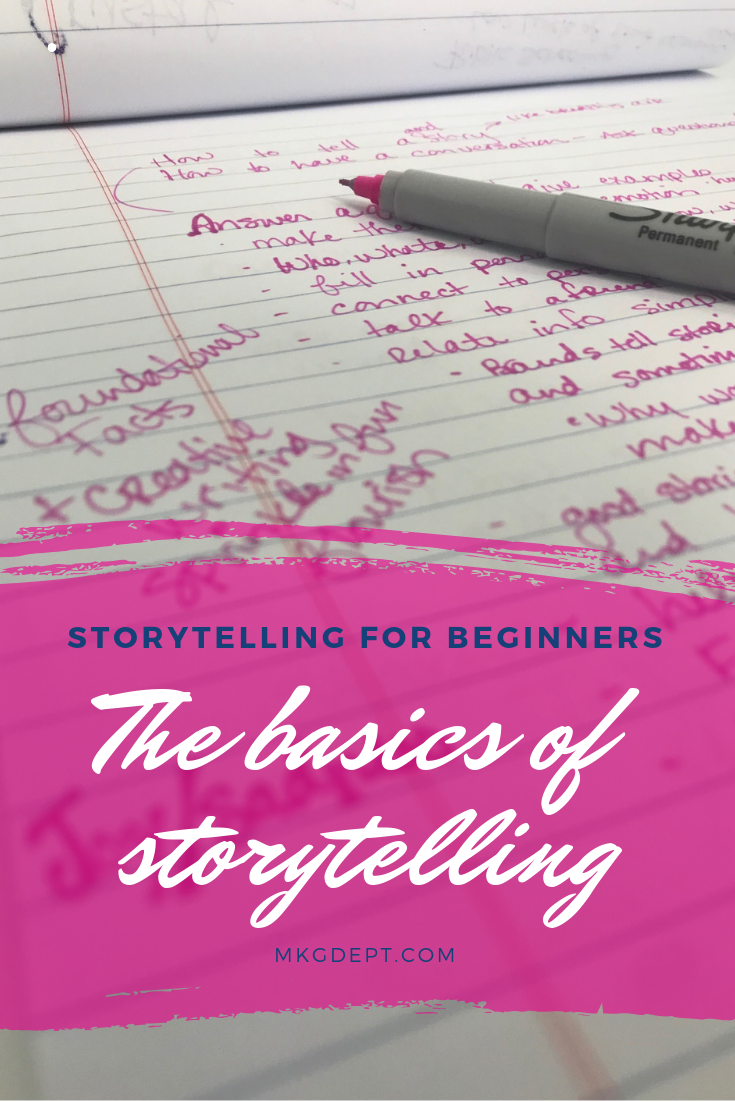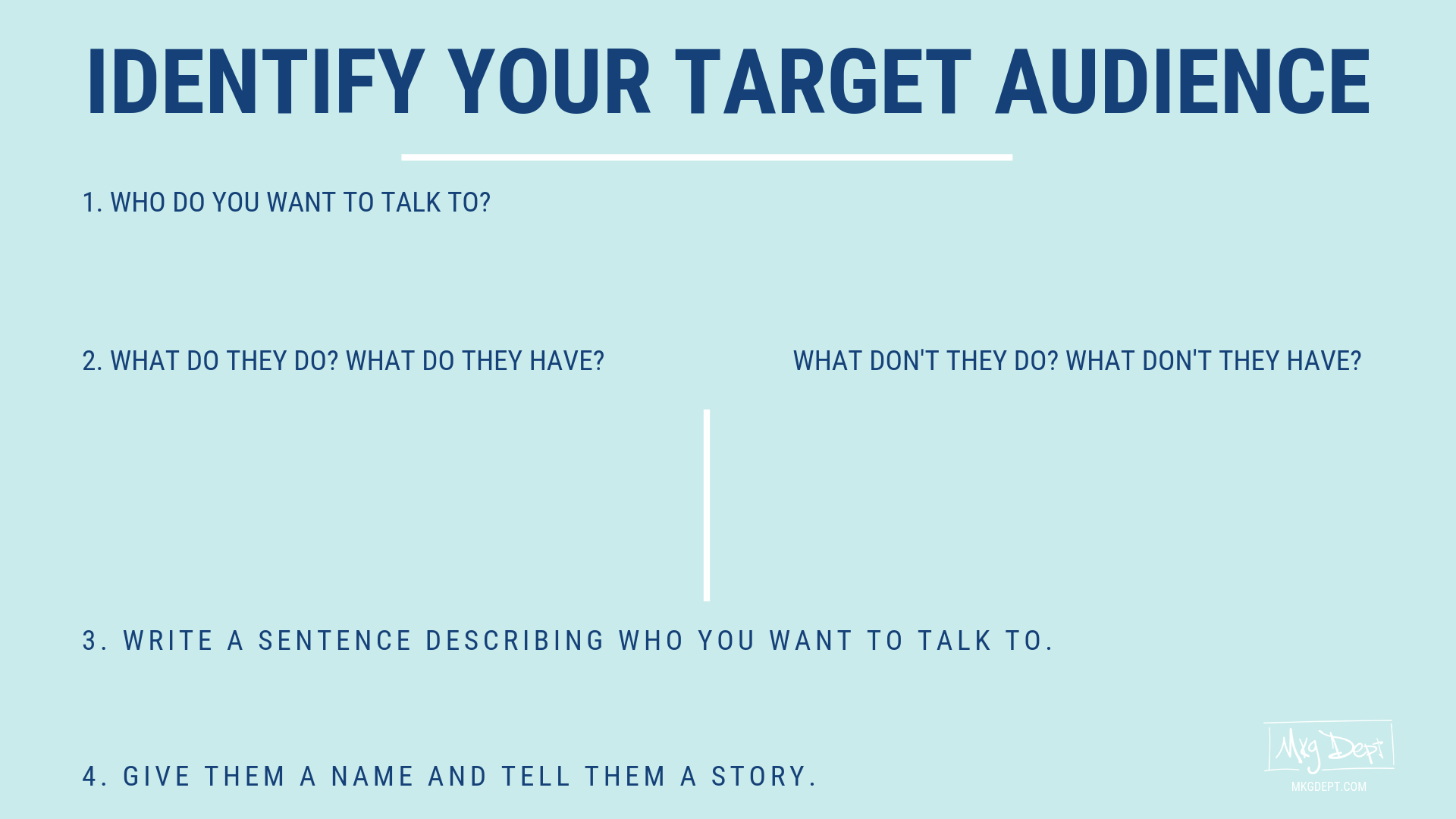Anyone can learn to become a master storyteller. Sure you’ll write a few sh*tty drafts in the beginning, but after some practice, you will get there. Below is a guide to get started on your storytelling adventure.

1: Know who you’re talking to
Begin by identifying your audience to know who you are writing the story for. This will help you figure out the type of story you want to tell and how you will deliver it. Your audience will dictate your method. Are you presenting to the board of directors? Try incorporating legacy and tradition into your story. Do you wish to engage parents? Include a personal experience about parenting your own kids. Want to talk to entrepreneurs? Post a blog on how to tell your entrepreneurial story. Once you identify your audience, narrow your focus to make the story more personal and engaging to your target. Use the graphic below if you need help identifying your audience.
2: Start by answering a question
A good story always answers a question. The reader might not even know they asked the question, but by stumbling upon your video/blog/article/website, they were searching for an answer. You found this article because you were interested in learning more about storytelling. If you don’t know the question you are answering just yet, write a sentence about your topic. This sentence is the answer to the question your audience is seeking. Knowing the question will help you to include the keywords that people are typing in their search browser. Identify your question: Let’s pretend you are a contestant on Jeopardy!. How would Alex Trebek require you to respond if he gave you your sentence as a clue?
3: Fill in facts
Now that you have your question and answer, let’s fill in some facts. Write down one sentence for each of the following questions: Who? What? When? Where? How? Why? Some of the answers might be obvious, but spend a little longer on each question to find a deeper answer.
4: Sprinkle in fun details
Connect your facts with creative whimsy. Add in some creative writing to engage the reader. In bullet one, we worked hard to identify your target audience. Now that you know who they are, spend time thinking about what words, phrases, and examples will resonate with them. For example, if you are talking to a group of dog lovers, you’ll talk about the loyalty, pride, and unconditional love that they experience from their furry friend.

5: Edit yourself
Simplify, trim, and get to the point without cutting out your unique character and style. You don’t want to bore your audience with unnecessary detail, or worse, make them feel like you are wasting their time. Our society wants quick, digestible information now. You have four seconds to draw them into your story before they move on. Where you share your story determines how much detail you can go into. Below is a simple guide for average postings. Optional: I know you’ve written a good story. If you want to share more details, here are a few options you can offer to your audience. Ask to meet up for coffee so you can tell the whole story. Link to a longer post or video and share.
Final Structure
The final structure of your story will look something like this: intro, story, summary. Tell them what you are going to tell them. Tell them. Tell them what you told them. This is the simple formula that we learned in primary school. Remember to include a call to action (CTA) at the end of the story to direct your audience to the next step that you want them to take. For further reading go here, or would you like to hear more about this story, lets meet for coffee. Follow these steps and you will have an engaging story to delight your audience.
Have a video or storytelling question? I’d love to hear from you!
Behind-the-scenes access to tips and tricks for video production and storytelling. Keep up-to-date on workshops and get a dose of inspiration.


